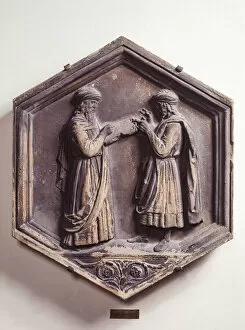Pythagorean Theorem Collection
The Pythagorean Theorem, named after the Ancient Greek philosopher Pythagoras (c. 580-500 BC), is a fundamental concept in mathematics that has stood the test of time
All Professionally Made to Order for Quick Shipping
The Pythagorean Theorem, named after the Ancient Greek philosopher Pythagoras (c. 580-500 BC), is a fundamental concept in mathematics that has stood the test of time. This theorem states that in a right-angled triangle, the square of the length of the hypotenuse (the side opposite to the right angle) is equal to the sum of the squares of the other two sides. Pythagoras, along with Euclid, played a significant role in developing this theorem and its applications. Their contributions can be seen through various historical artifacts such as marble tiles from 1437 and pages from ancient manuscripts depicting allegories of Arithmetic and Geometry. Engravings featuring Pythagoras himself further highlight his importance in mathematical history. One engraving shows him alongside Boethius, another influential figure who expanded on Pythagorean ideas. These depictions serve as reminders that Pythagoras was not only a mathematician but also an esteemed philosopher who sought knowledge beyond numbers. His encounters with Egyptian priests are well-documented and suggest his interest in different cultures' mathematical practices. Even though centuries have passed since these events occurred, we still study and apply Pythagorean principles today. From architecture to engineering, this theorem remains essential for calculating distances or determining angles accurately. Whether it's through ancient engravings or manuscript pages dating back centuries ago, our fascination with Pythagoras and his eponymous theorem endures. As we continue to explore new frontiers in mathematics and beyond, let us remember those who laid its foundations – like Pythagoras – whose legacy continues to shape our understanding of geometry and arithmetic.














